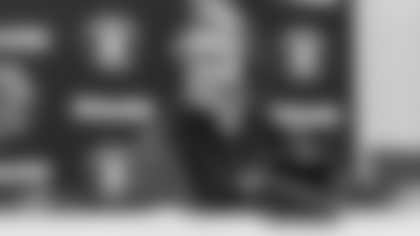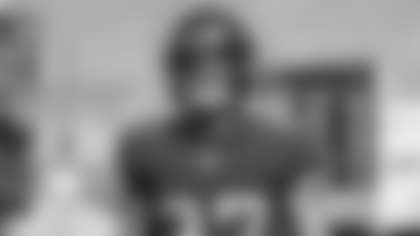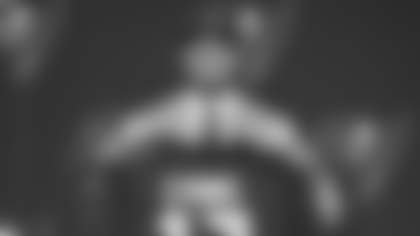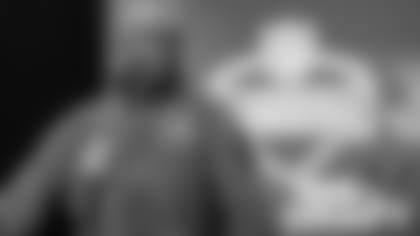On Thursday, it was announced that the Los Angeles Rams had secured a trade with the Tennessee Titans to move up from No. 15 to No. 1. Below is a look at four other times in NFL history that the top overall pick has been traded.
2001: Falcons trade up for Michael Vick
The San Diego Chargers traded up one spot to #2 in 1998 to get in position to draft Ryan Leaf. That didn't work out so well.
Leaf's last year in San Diego was 2000. It was something of a train wreck, as were the Chargers, who went 1-15. One couldn't have blamed them for using the #1 overall pick they got from that terrible record to reboot at quarterback. One also couldn't blame them if they were a bit gun-shy of going through that whole mess again.
The hot QB prospect that year was Virginia Tech's Michael Vick, and the Chargers were obviously interested. However, they were unable to reach a pre-draft contract agreement with Vick, so they chose instead to send that first-overall pick to the Atlanta Falcons, who were also looking for a franchise QB with Chris Chandler crossing into the wrong half of his 30s. Atlanta was picking fifth in the draft, going 4-12 in 2000 two years after making the Super Bowl with Chandler.
San Diego's haul for moving from one down to five was a third-round pick in that 2001 draft, a second-round pick in 2002 and WR Tim Dwight. In a way, the deal turned out to be the proverbial "win-win," but we'll take the Chargers' flavor of victory if given the choice.
Atlanta took Vick, and even though his career with the Falcons ended before any sort of championship thanks in part to his conviction for being involved in a dog-fighting ring, he was a very strong performer for six years in Atlanta. Meanwhile, the Chargers nabbed TCU running back LaDainian Tomlinson at #5 and watched him blossom into an almost certain Hall-of-Famer. Then, with the first pick of the second round, they took quarterback Drew Brees, who has proved to be far more valuable in the long run than Vick.
If Brees' best years had come in San Diego instead of New Orleans, this scenario would be far more lopsided. Also, the Purdue passer was taken with a pick the Chargers already had; they took CB Tay Cody with their extra third-rounder in 2001 and WR Reche Caldwell with the bonus second-rounder in 2002. Cody didn't amount to much and Caldwell had just one season with more than 30 catches, that with the Patriots. Dwight was nothing special as a receiver or a return man for three years with the Chargers.
Still, San Diego would make this deal again in a heartbeat, while the Falcons might hesitate. Advantage in this one goes to the team trading down.
1997: Rams jump up to grab Orlando Pace
Ohio State offensive tackle Orlando Pace was considered by far the best prospect in the 1997 draft, and presumably that was of interest to the New York Jets, who held the top spot after going 1-15 the year before. The Jets had also picked first in 1996 and had gone with USC wide receiver Keyshawn Johnson.
Those '97 Jets did have Jumbo Elliott at left tackle, and he had manned the position quite well for a long time (and would continue to do so through 1999). They also had a new head coach, having shipped several draft picks to the New England Patriots for a chance to put Bill Parcells on their sideline…and in charge of their personnel.
Parcells decided that the best use of the first overall pick for a 1-15 team was to turn it into as many players as possible. He sent it to the St. Louis Rams for the sixth overall pick plus selections in the third, fourth and seventh rounds. Parcells later moved one of those picks for several more and ended up with a total of seven choices born originally of that #1 spot. The Rams moved up for what now looks like a very slim price and took Pace who is likely to get the call from the Hall of Fame soon.

(From left) Ki-Jana Carter, LaDainian Tomlinson, Chris Hinton and Orlando Pace all have connections to trades involving #1-overall draft picks
The seven players the Jets got from those series of trade downs were LB James Farrior, WR Dedric Ward, RB Leon Johnson, DT Jason Ferguson, DE Terry Day, QB Chuck Clements and TE Lawrence Hart. Farrior proved to be a very good player but the majority of his career was spent in Pittsburgh. Ferguson was a good player, too, and an especially good value as a seventh-round pick. Ward and Johnson had so-so NFL careers. Day, Clements and Hart did virtually nothing in the NFL.
Reverse the deal now. Would St. Louis at any point in Orlando Pace's career trade him for Farrior, Ferguson and a handful of low-impact players? Certainly not. In this case, the advantage goes to the team trading up.
1995: Expansion Panthers move out of top slot
The Carolina Panthers were given the first pick in the draft in 1995, when they and the Jacksonville Jaguars entered the league as expansion teams. That meant the Panthers could justify just about any pick that would give them a franchise cornerstone at one of the most important positions.
The most important position is quarterback, of course. The Panthers could have stayed put at #1 and had their choice of Steve McNair, Kerry Collins, Todd Collins or Kordell Stewart. Instead, they traded down four spots with the Cincinnati Bengals, who used the top spot to take Penn State running back Ki-Jana Carter.
Carter tore an ACL on his third preseason carry for the Bengals and battled injuries throughout his very disappointing NFL career. The Panthers took the fifth-overall pick and landed Kerry Collins, though they missed out on McNair, who went to the Houston Oilers at #3. They got the Bengals' second-round pick in the deal (#36 overall) and spent it on DE Shawn King, who was a complete bust in part due to a string of substance-abuse suspensions. Collins had his own problems early in his career due to alcohol abuse, and while he did make the Pro Bowl and lead the Panthers to the NFC Championship Game in 1996, he lasted less than four years in Carolina.
There isn't a clear winner in this deal, in part because both teams missed out on a ton of better options in that 1995 draft. The Buccaneers ended up with a pair of Hall-of-Famers in that same first round in Warren Sapp and Derrick Brooks, and that same opening stanza produced McNair, Tony Boselli, Kevin Carter, Joey Galloway, Hugh Douglas, Ty Law, Korey Stringer, Mark Bruener and another five to 10 very good NFL players. Advantage to the team trading down, the Panthers, for getting the most successful player in the deal, but it's not an overwhelming win.
1990: Colts go after Jeff George
It's not surprising to see quarterbacks figure prominently in these deals, and in 1990 it was Indianapolis that was intent on getting its man. In this case, that was big-armed Illinois passer Jeff George.
This is the same Indianapolis franchise that would take Peyton Manning first overall in 1998 and then move directly from the Manning era into the Andrew Luck era with the first overall pick in 2002. That's a one-two QB draft punch that might never be equaled. In 1990, however, they were coming off a decade or so of messing around with the likes of Mike Pagel, Jack Trudeau and Jeff Chandler. One could understand their desire for a franchise savior under center.
George wasn't it. He could throw the ball a mile but never had a 3,000-yard season or a passer rating better than 76.3 in four years with the Colts. Moreover, his record as a starter was 14-35. Ironically, he would move from the Colts directly to the Falcons, starting all 32 games during the 1994-95 seasons.
To move from #5 up to #1 to get George, the Colts shipped a fifth-round pick in 1990, a first-round pick in 1991 to the Falcons, along with established veterans Chris Hinton and Andre Rison. That's where the deal got lopsided. Hinton was a 28-year-old stud left tackle, and he went on to start four seasons for the Falcons (albeit at RT and RG). We might have been stretching it to call Rison an "established veteran," as he played just one season in Indy after being drafted #22 overall in 1989, but he was definitely a coveted asset in 1990. Rison would go on to a 10,000-yard NFL career, including five extremely productive years in Atlanta.
Atlanta got a fourth-round pick and Indy got a fifth-rounder in the deal, but neither of those picks proved significant. The Falcons used the 1991 first-rounder form the trade to draft WR Mike Pritchard, who had a pretty good nine-year career in the NFL, the first three in Atlanta. This one's a slam dunk: Advantage in a big way to the team trading down.






















